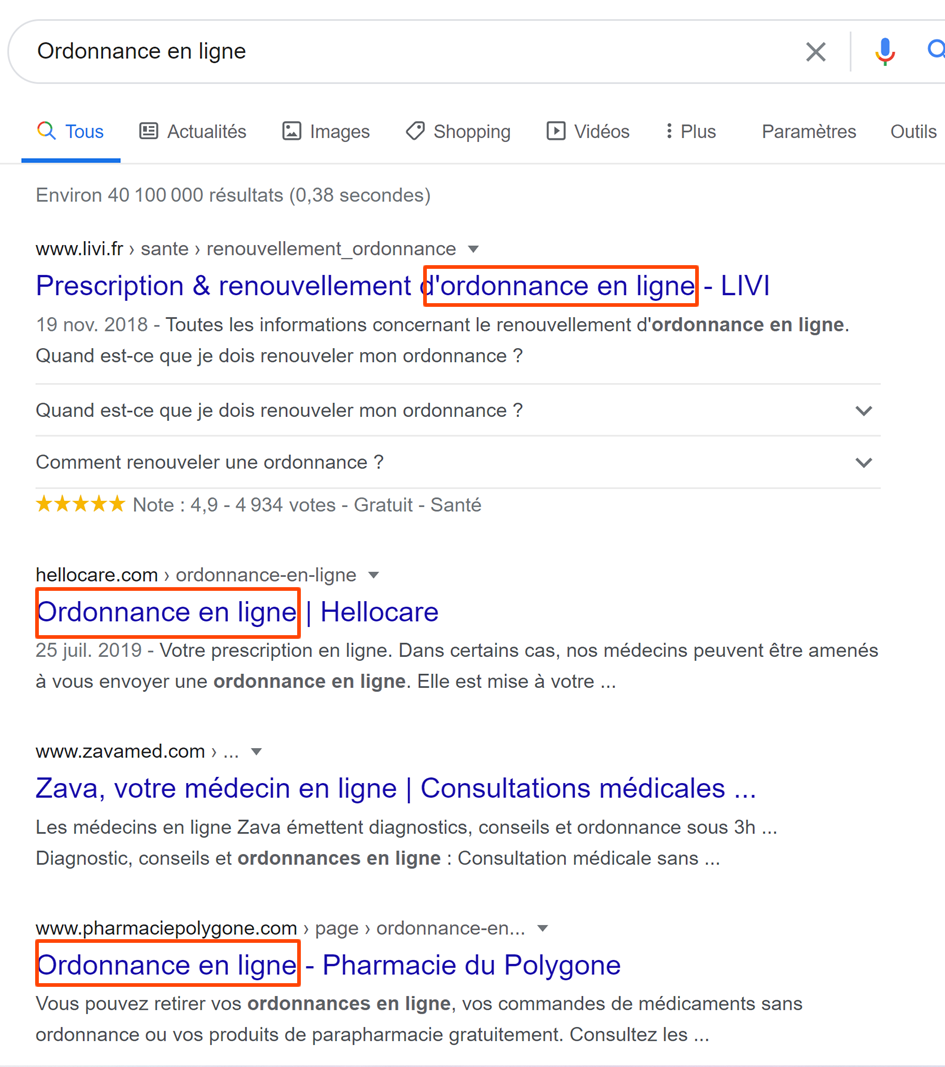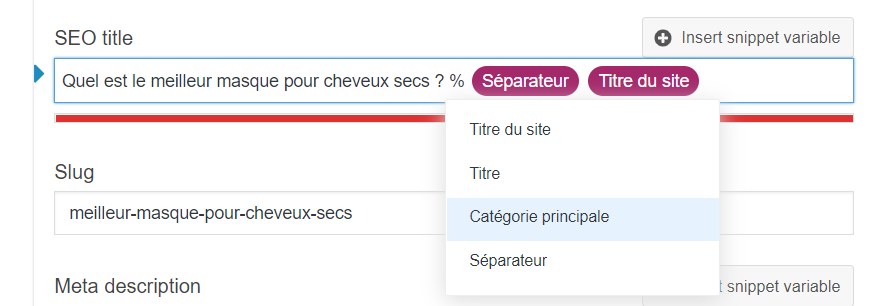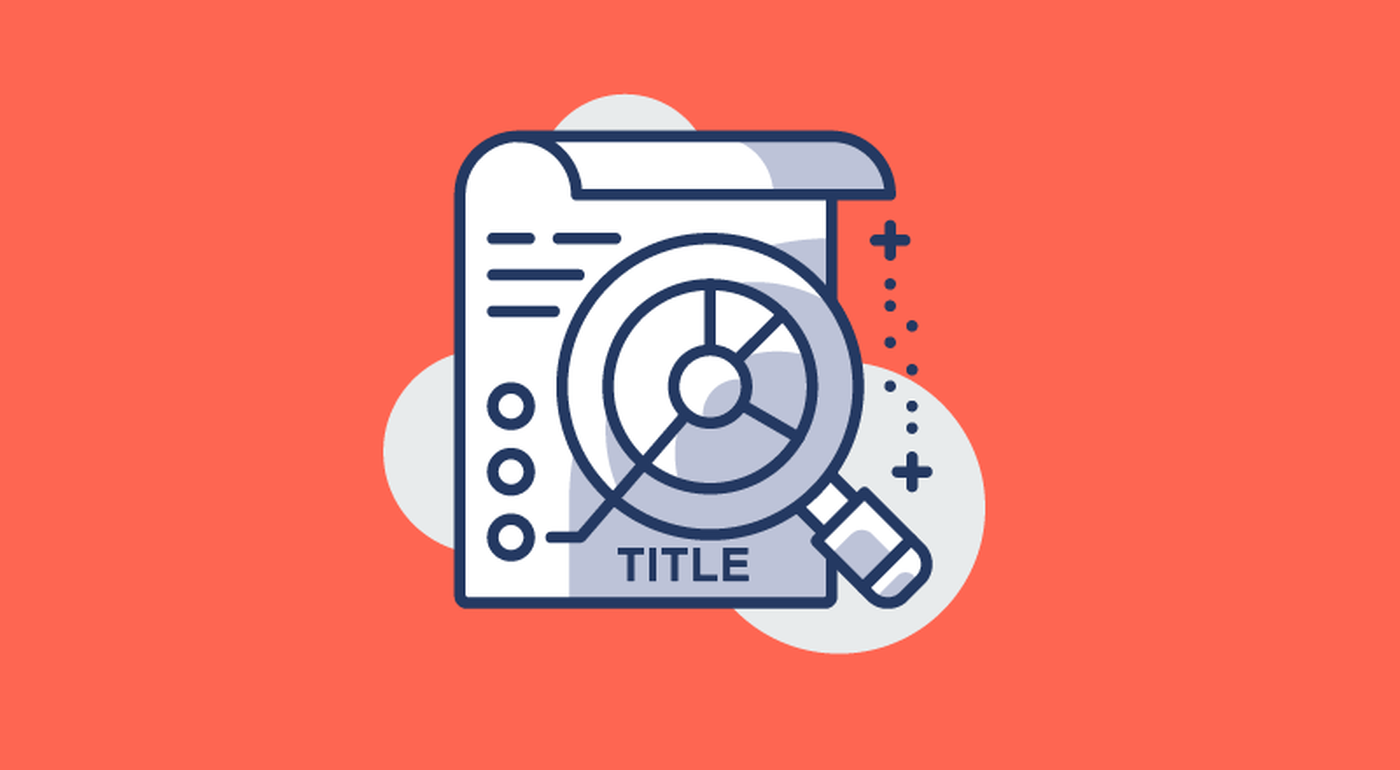Optimizing your organic search ranking, the title tag is essential. It is a META tag. This tag appears in the SERPs as a title. When well-written, it provides relevant information about the content of a page. It should be related to the target keyword.
These tags are also called meta-titles. The title of your page is as important as the title of a novel, and it should address your two most important targets: your visitors and Google's indexing robots.
Users who perform a search and read your title should be convinced of its relevance. Indexing robots or crawlers consider your tags as SEO factors. If your META tags demonstrate your site/sector expertise and match the content of the page, you will likely achieve a better ranking.
❓ What is a title tag?
Here's the definition: A title tag is an HTML element that defines the title of a web page. Its display on search engines is limited to 512 pixels (between 55 and 65 characters, depending on the letters used). Displayed as a blue link, it is essential for SEO and social sharing. This element is also used by internet browsers to name the tab of the displayed page.
On Google's results pages, the title tag is displayed between the URL of the targeted page and its meta description. It is considered a "hot zone" in organic search (similar to, for example, an image's alt attribute, the URL, or all
🖼 Examples of META tags
In the example below, the texts underlined in red are page titles. These tags describe the content and correspond to the keyword "online prescription." When searching for this phrase, these articles appear first because they correspond to the most reliable websites.

To create a tag of this type, you also need to know HTML markup. If you look at the code on your web page, you should find a code snippet like this:

Example of HTML code for title tag:
## 🕵️♀️ How to view the title tag?
The title tag should appear in the
section of an HTML document. To add it, you will need to access the source code of your site. On Google Chrome, Mozilla Firefox, you can right-click > View Source (or press CTRL+U).Once the source code is displayed, search for the title tag in the source. See below:

To display the title tag, you can also hover your mouse over the browser tab. A small bubble appears, showing you the title of the page and the URL of the site's homepage.
If you use WordPress and have an SEO plugin installed, you can easily access your metadata, fill it in, or transform it. This is also possible on other CMS, such as Prestashop, Magento, or Shopify.

Finally, you can see how Google presents your page on their results page. To do this, simply add "site:" before your URL. Here's what appears when I type site:https://www.seoquantum.com/billet/balise-meta/title in Google's search bar.

## ✅ Best practices for title tags
Your title tags should be relevant and appeal to users. They should also contain the essential elements analyzed by indexing engines.
Here are some elements to consider:
### Length
Your tags should be a maximum of 60 characters long. Although Google has not specified a maximum length, we can say that only the first 50 to 60 characters are displayed. If your title is longer, it will likely be shortened when displayed in a SERP. That's why many SEOs and web copywriters recommend a title as brief and concise as possible.
However, Olivier Andrieu, the "Pope of SEO," has another theory on this subject. According to him, it's a mistake not to take full advantage of this essential tag for organic search. The key is to ensure that the part displayed on search engine results pages remains attractive to ensure a good click-through rate (CTR).
### Keywords
SEO places great importance on keywords. Title tags and meta-descriptions are no exception. Choosing the right keywords is even more important than the length of the text. When writing your titles, you should, if possible, include your main keyword, the one you want to rank for. Identifying and using the right keywords will, in most cases, result in better rankings.
Google monitors keyword stuffing (keyword stuffing). So avoid adding your keyword to all titles of a post. You should use your main keyword at least twice, including once in the article title. You can use variations of the keyword or related keywords to achieve greater diversity.
### Write clear and actionable titles
You should use unique titles that creatively describe your web page. Google has also stated that webmasters should not use the words "Home" or "Profile" in a page title. Google may even change the title if it is too generic. Your goal is to convey a clear message in just a few words that entices users to want to learn more.
Action verbs are also a good way to write a quality title tag. Some of the best action words include:
- Boost
- Create
- Develop
- Learn
- Get
- Take
There are many others. If you're struggling, you can try one of the title generator tools (all in English). The result should not be used as is but simply serve as inspiration:
- https://fatjoe.com/blog-title-generator/
- https://seopressor.com/blog-title-generator/
- https://www.hubspot.com/blog-topic-generator

A title must be descriptive enough for the user to be sure that the answer to their query is in the post.
### Include your brand name in the title
If you have a well-known brand, you can format the title to include the brand name. Although this is not always recommended for lesser-known brands, it can help you know the click-through rate when users are familiar with the brand.
Since titles are the most visible in search engine results, the brand name should be included in a way that shows it is trustworthy and provides the right products for the keyword or search term.

### Always write for your target audience
We can't stress this enough: ALWAYS write for the user. If title tags make it easier for visitors to understand the subject of your content, you also need to make sure it appeals to your main target.
### Google may choose a different title
In some cases, Google may change the title. For example, if you indicate a title in the page header but also indicate a different title on social networks, Google may use the Facebook title on the results page. Don't worry, the title tag depends on the keyword entered by the user.
## ❌ Mistakes to avoid when writing a good meta title
Like any SEO factor, their use is double-edged. If you optimize your title tags correctly, you improve your click-through rate and your SERP ranking. On the other hand, when you make mistakes, you risk losing your visibility on search engines. Here are the mistakes to avoid for successful title writing.
### Avoid using "ClickBait" titles
You want users to click on your links when they appear on a SERP. But what happens when they click and the page content is not relevant? It's simple, irrelevant content will lower your ranking!
ClickBait titles have become popular because they take advantage of users looking for answers who appreciate this type of title. These titles greatly exaggerate reality and have the sole purpose of attracting as many readers as possible.
But when a user visits the web page and the content does not match or answer the question, they may be unhappy. Most of the time, the information displayed is useless or spammy.
You should create your titles so that they complement your content and readers know exactly what to expect.
### Avoid duplicate titles
It is still common to find websites that offer a single title and metadata for all their pages. This is especially the case for sites created in the early 2000s. By doing so, you do not send a clear message to search engines. They will not know which page to display to answer a query containing your keyword. Moreover, the title will not be personalized for the user who has a specific problem or need. They may not be inclined to click on your URL to get an adequate answer.
Due to the large number of products they offer, page titles on e-commerce sites are not all unique. If this is your case, it is essential that you change this immediately, as all titles must be unique. Since your pages can be created automatically when you upload products, you may need to work with your developer to add product titles.
### Avoid too short titles
If the maximum length of a title tag is debatable, its minimum length is unequivocal. If you do not write at least 50 characters, you will most likely not meet search intents. Additionally, you will not have enough words to optimize your organic search.
Fortunately, once you want to write your title tags correctly, it's usually the opposite problem you face. Indeed, to entice users to click on your link (copywriting) and provide enough keywords to properly inform search engines, you tend to write more rather than less.
### Avoid not writing a title
If you have read this entire article, you know that leaving a title tag empty is counterproductive, both for your SEO and your click-through rate. If you do not fill in this information yourself, search engines or your CMS will do it for you. And of course, the result will not be as effective as if you had done it yourself!
Why would you let software or robots do this important work? Take the time to write your meta title tag correctly or delegate this task to a professional (web writer or copywriter). Your return on investment will undoubtedly be better!
You now understand that a title tag is an extremely important factor for organic search. It also helps attract more traffic to your website by enticing users to favor your link in the SERP. Remember the key elements to consider for optimizing your title:
- target your readership;
- write unique and attractive titles;
- add the main keyword at the beginning of your tag;
- ensure your content fulfills the promise made in the title;
- check that the text displayed in the SERP is displayed optimally.
To go even further, I invite you to visit the article dedicated to optimizing the title tag.
Need to go further?
If you need to delve deeper into the topic, the editorial team recommends the following 5 contents:

